CLUBBING TOGETHER
Yeoville’s food hopes rise from the ashes
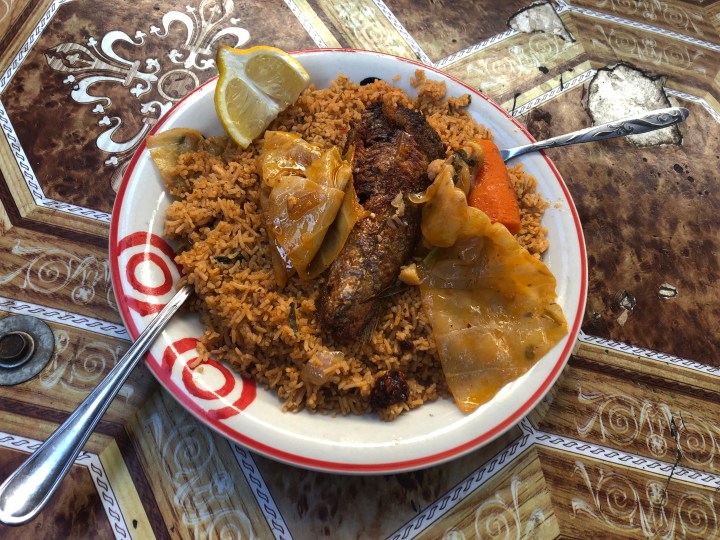
We all love a good phoenix story but this is a little different – it’s about hope and determination and Wolof (which is similar to jollof) rice.
Yeoville’s indoor market, scene of a recent fire, is a big, crowded central supplier and every third shop in the main street, which starts as Raleigh and ends as Rockey, sells food or drinks. It’s also home to the Yeoville Dinner Club.
My friend Sanza Sandile is the inventor, chef and host of the always interesting private restaurant, Yeoville Dinner Club. People book in advance, sit at a long table and the meal is many set courses, all cooked by Sanza, all Pan-African. He sources the ingredients from the Yeoville Market across the road. Visitors to South Africa and even food-curious locals book evenings here. He’s a great raconteur and, among the guests, specially inserted, as he says, is always a famous African artist or two so there’s a lot of casual chat-entertainment and food knowledge at the dinners. He’s an ardent Yeovillephile and understands how the vibrance of Jozi is composed of its people from other places. So he has more going for him than a predilection for cute hats.
He’d mentioned that, just after the fire in the very early hours at the Yeoville market (on 21 June), a new food man had arrived on the block and opened up the very same day. He’s from Senegal, he said. I was keen to meet him and he wanted to go too. Yeoville, despite being composed of people from so many different countries on our continent, is cosy in the sense that everyone knows what’s happening, who and where. Everyone has been battling for a bit more than survival as the glue that binds them.
The Uber driver’s reached a section where the tar is so widely gouged that a wide pool of water languishes there permanently, whatever the weather, and is worried about her tyres. I’m happy to walk the not-more-than-a-block to Sanza’s place but she’s started ploughing through the shallow water slowly. Sanza says later that this pool marks the care divide of Raleigh-Rockey Street. There’s a different councillor on each side, one fairly good and one who doesn’t seem to give a damn. It’s quite easy to spot the difference across the dividing cross-street, Bedford.
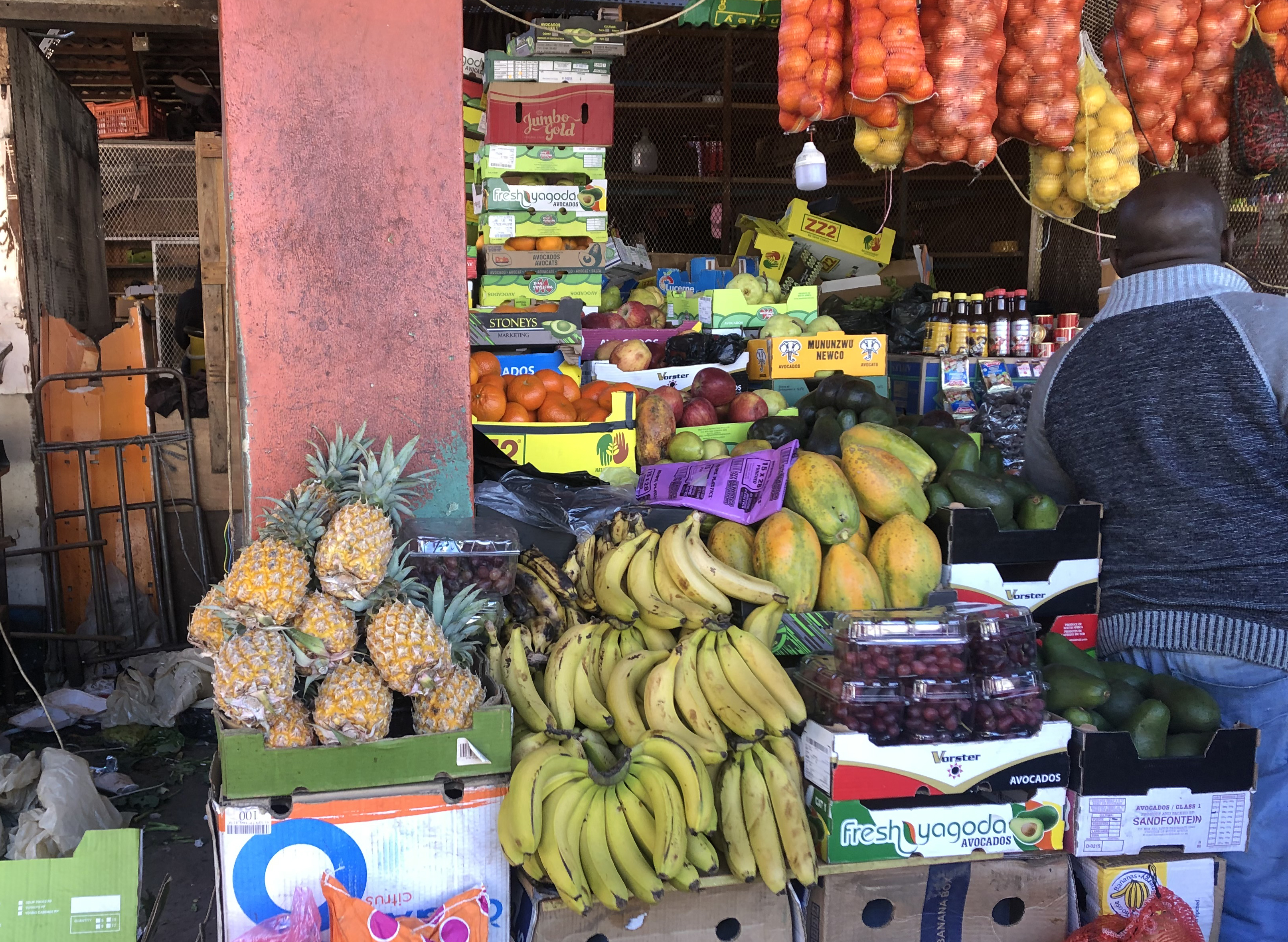
Strange to see how the market fire stopped, leaving the next stall untouched. (Photo: Marie-Lais Emond)
The whole street looks a little mournful as I get out, many people standing on the sunny side, almost silent. It is deeply cold to be sure but I wonder if they are still stunned by the fire. It turns out to be loadshedding when everyone comes out into the light. Those who don’t have noisy generators.
“Anyway,” says Sanza as we cross the Rockey Street part of the road to the market that, from here, looks as it always does, “the fire was crazily exaggerated in the news. There are now people without their stalls and they’re suffering dreadful loss but thank heavens there are not many more than 20.” The market has somewhere between 150 and 200 stalls.
We’re (Sanza, his nine-year-old daughter on school holidays and I) heading to the back, to the fairly new, by Yeoville market standards, kitchens at the back, where Sanza likes to start his day with sour porridge. We pop around the other way first, to see the corner that nicked the blaze. It’s the south-west corner, where there are usually mostly Congolese women stallholders as well as a Ghanaian man that I know of. Sanza buys his okra from him. It’s ironic to see lots of vegetables within the ruins, nicely baked by the fire, lying on the ground.
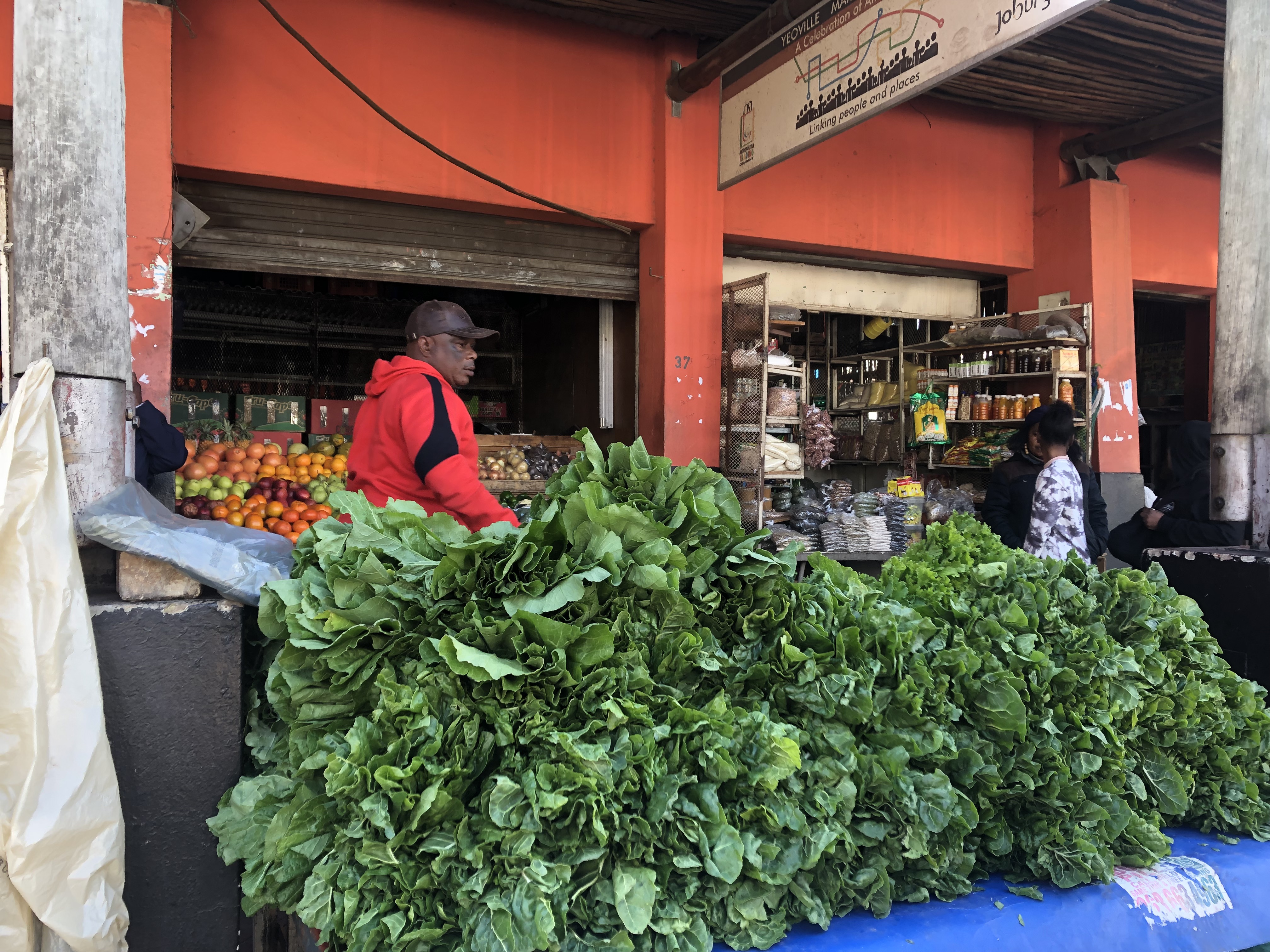
Affected stallholders have fresh wares out on the pavement, in front of other stalls now. (Photo: Marie-Lais Emond)
What’s interesting is how the stallholders with burnt stalls have got their rather gorgeous, new wares out on the pavement now, bouquets of fresh greenery in many shades. I haven’t seen this in ages in Yeoville and seem to remember that the market was put up here “to get hawkers off the streets” in the first place. Various African embassies have been dropping off food parcels for their own people, sometimes dispensing, too, to some other-country stallholders. I notice bright cans of fish in one large plastic packet, easy food to feed their people who cannot easily do so now.
Sanza’s holding a very generous bowl of his sour pap, into which he adds a few spoons of sugar, to the feigned shock of Londiwe, his daughter. I taste some and can get that appealing sour edge but it’s now been sweetened too far over that for me.
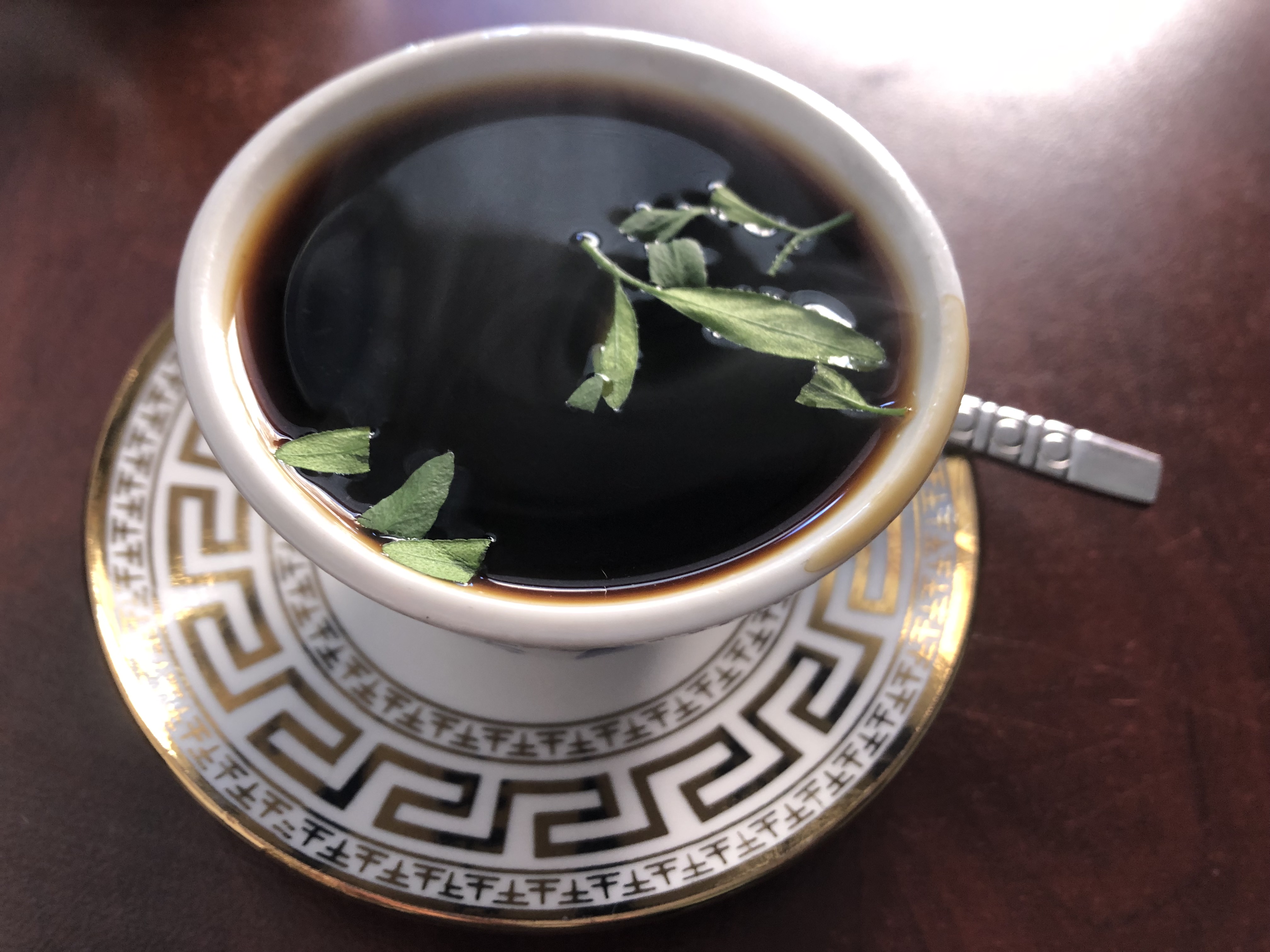
Rue adds a citrusiness to the smoky green-bean Ethiopian coffee. (Photo: Marie-Lais)
Next thing is coffee, I’m happy to hear. Down from the market is one of the Ethiopian shops I’ve been in with Sanza before. He likes this pan-African breakfasting on the street. There’s a sprig of rue next to my steaming coffee cup. I’ve never had it with coffee so I scatter some on the brew as an experiment. Sanza says you can chew it in between sips too, if you like, for its citrusiness that goes well with this smoky green-bean Ethiopian coffee. It does. Sanza grew this plant for the woman at this shop.
Having breakfasted, we stop and chat to stallholders, shopkeepers, loiterers all the way back and Londiwe skips along testing what exists of my isiZulu against hers, refusing my suggestion of isiXhosa, where I’d score slightly better. Here, it’d really be better to have French, Swahili and Yoruba. We meet an Algerian baker at shop Christopher, working, it seems, for an Eastern European boss. The street gradually warms as we go.
La Camerounaise is not on the sunny side. I know it for the delicious smoked-and-braaied fish lunches I’ve eaten here, most people using their hands seemingly sensibly, though the fish has a particular smell that never seems to leave them afterwards. La Camerounaise also used to do the catering for the bar-restaurant at the top of Ponte nearby.
The entrance gates to the Cameroonian place are on Rockey Street but they lead into a big inner L-shaped courtyard. At the crook of the L is a stage and then, on the left as you progress, is La Camerounaise restaurant itself. At the end of the L is a counter across the space, with an open-air kitchen behind it and a man in a grey hoodie. We’ve come to meet him, Balla Soumah-Bakel from Senegal.
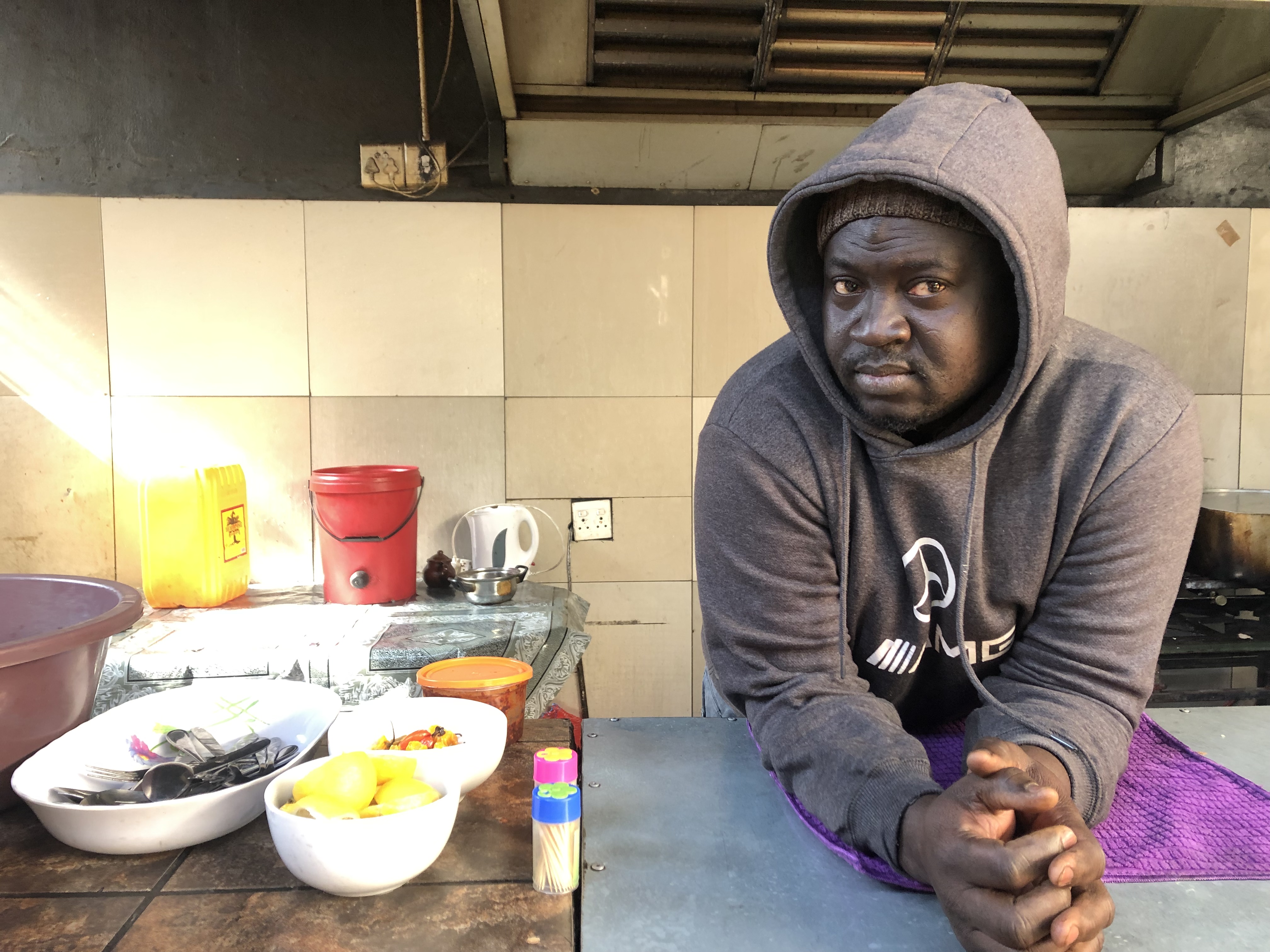
Balla Soumah-Bakel, who came to us from Senegal with hope and determination. (Photo: Marie-Lais Emond)
Only open for a week now, Balla has worked out what to do for the lunch meals he cooks and provides. Today is what sounds like Russian Fish day. That’s what Sanza and I hear but it’s Rice and Fish, the national dish of Senegal, called ceebu jen back home. On other days it’s Rice and Beef and then two kinds of Rice and Chicken, depending on the sizes of the chickens, I hear. Rice is the hero in all these names.
Balla buys all ingredients, as I mentioned earlier, from the Yeoville Market. Those are the rices, two of them, both long-grain, basmati and another long-grain. Those are also the fish, not his own beloved Yaboye, which are sardinella and which he uses for this dish in Senegal. This fish flesh is whiter. It is also not the favoured Cameroonian fish, which is like a mackerel. I know it’s not hake but I can’t identify the heads and skeletons in the pot among the other ingredients. Those are also the chillies, not exactly the ones he’s used to. However, Balla makes a chilli relish from dried chillies he’s bought that smell like his, mixed with the dried chillies he knows and which he mixes together with a little oil and presents with food as a little on the side. He says people in Yeoville like hot chilli more than his people. And those are the lemons, also not exactly the same in taste. As far as I know Senegalese dishes feature a lot of them, especially in the Casamance area that Balla knows so well as part of his Wolof background, though he was living in Dakar before he came here.
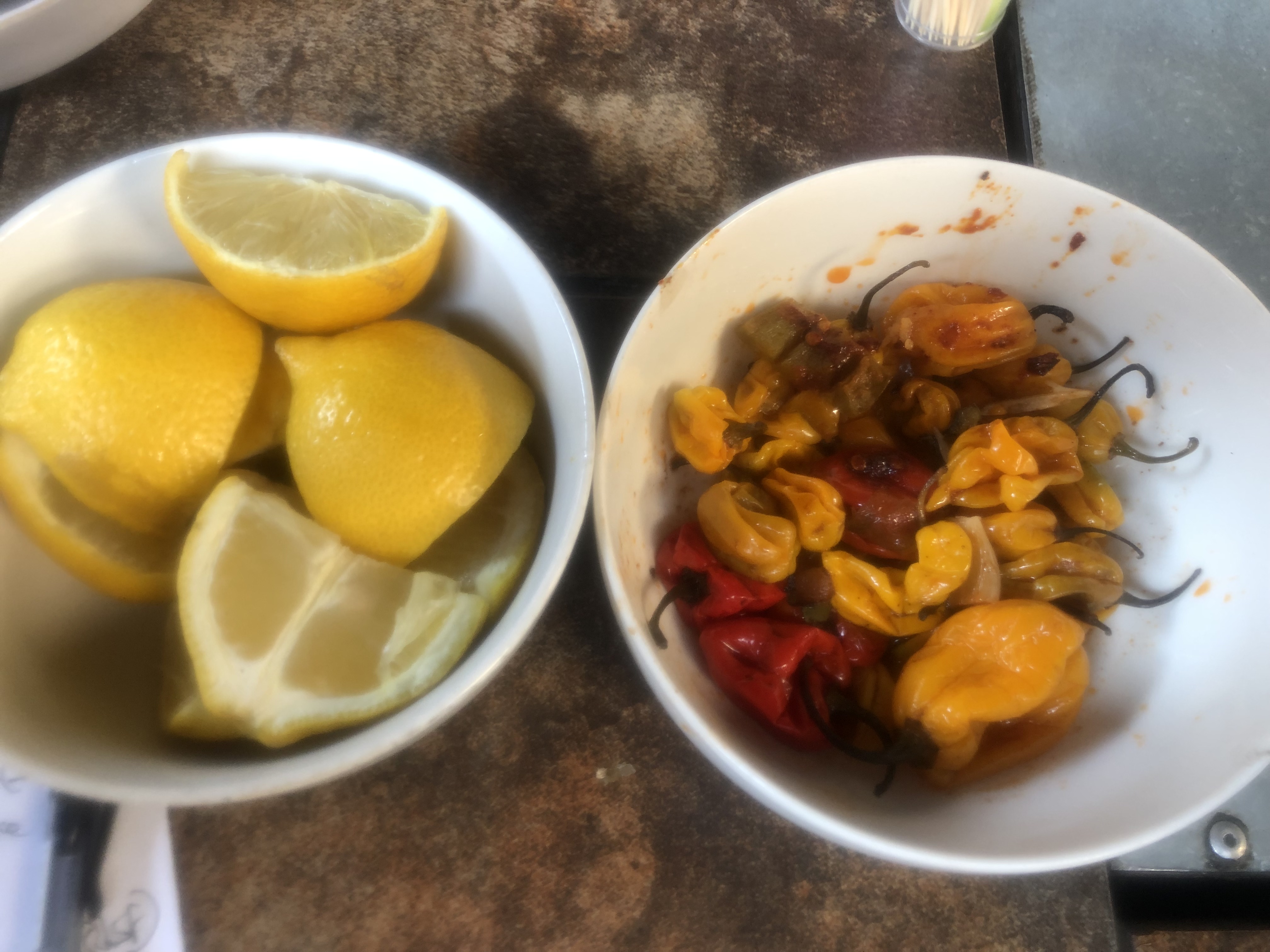
People in Yeoville like hot chilli more than his people do, and the lemons are good. (Photo: Marie-Lais Emond)
No, he says in answer to my question, he was not a cook before. He was trading in clothing and shoes in Dakar. “But to live is even expensive. Life is hard. Africa is Africa.” Now he must support his parents and the family from afar. That is why he is here. Every night before he sleeps he speaks to his mother and father by phone. He tells me, “I respect my parents.” He hopes and wants to support them by cooking the food he knows.
Everything is cooked with and in what’s here, an enormous wooden mortar and pestle and two mighty pots.
We order the Rice and Chicken. I’ve forgotten Sanza ate all that sour pap earlier. Maybe it’s why, when we sit down, there’s one dish for all of us to share. It is fun, though.“It cooks for two hours, all natural,” says Balla, who gets here at 6.30 every morning to start prepping.
Sanza’s heard all the Jollof rice arguments of origin at his dinner club. I’ve certainly read and heard many too. The origin story that makes the most sense to me and to him is the rice dish that isn’t even called Jollof. It’s called ceebu jen in Wolof, where it originated, or Theboudienne in French or thiebou dieune. So, it is the Wolof rice. Here the slightly red rice, much redder as jolof in other parts of West Africa, is cooked in various combinations and then with the fish, taking a few hours.
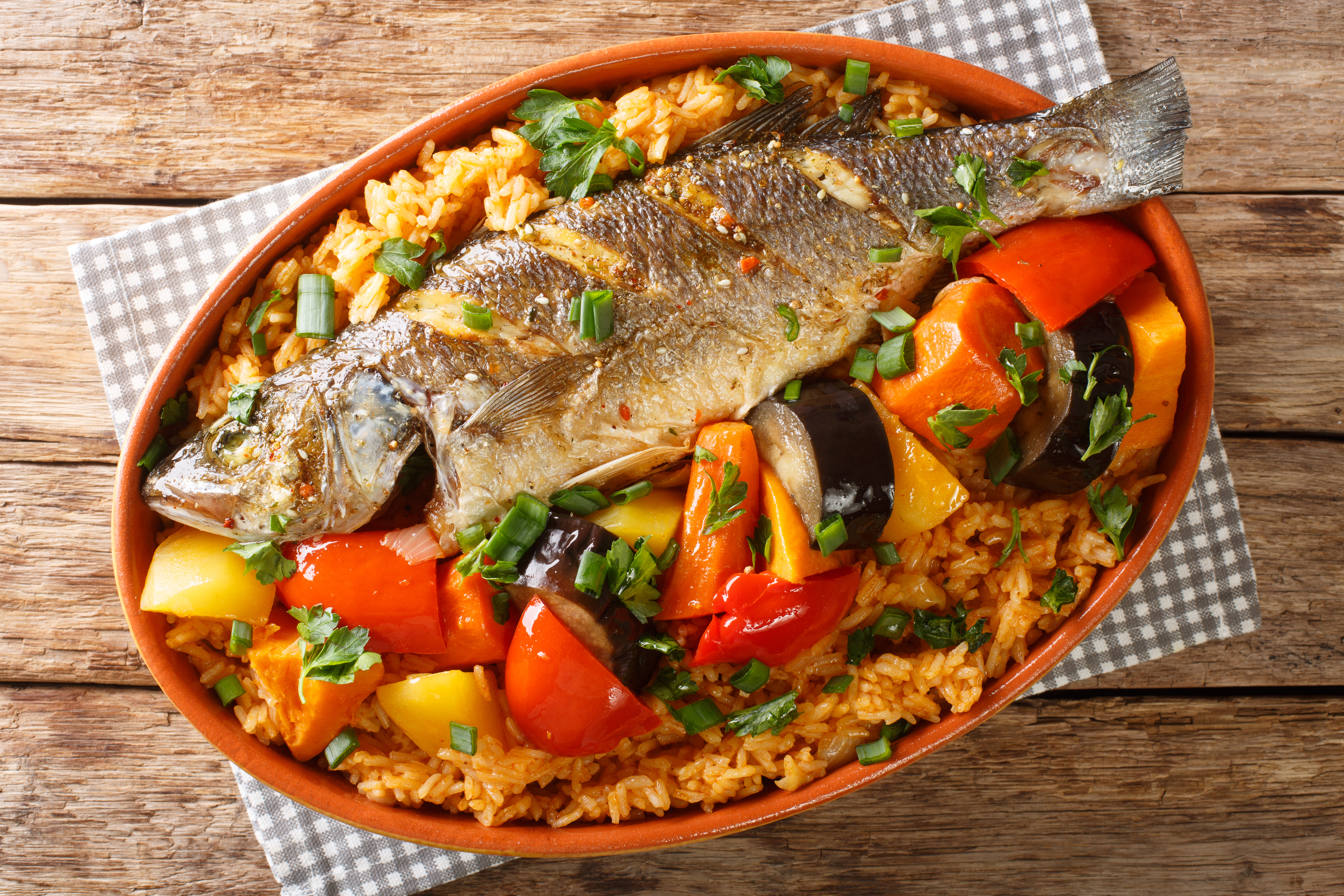
A generic photo of Ceebu Jen (Cameroonian preparation of fresh fish and rice). (Photo: iStock)
There are sometimes aubergines and sweet potatoes in it. Generally, as here, there are carrots, cabbage and bell peppers in the rice dish and the rice is sauced early, in tomatoes, onion, garlic, shrimp paste or bouillon, a little chilli. The fish also has a parsley marinade or rub and then all are brought together in various stages and completed together.
It’s a fact now, long disputed, that rice grew in Africa, particularly west Africa, even before it grew in the east. Ours is oryza glabberima happily growing in 1500BCE and still growing in the Future Africa gardens of the University of Pretoria, hardy and unfussy about soil condition, whether it be dry or silty. The eastern rice, common to us today is oryza sativa. This is all interesting to consider with a mouthful of Senegalese Rice and Fish.
Other customers drift up to order and Balla gets a call to deliver a meal to the market. He apologises to us as he hurries off to do that. It’s a one-man business. Sanza reckons to me, unuseful person in this matter as I am, that this is not good for Balla’s business, that he needs to employ a helper, “Maybe a young man from Malawi” at that, to go around the market and take orders and then deliver the food for Balla.
I marvel at the business of the ingredients coming from the market to feed the people at the market. I also know that Sanza likes to laugh and say that his own food, though mostly eaten by other foreigners, is made with ingredients from the Yeoville market and “caters to all the many tastes of Yeoville”. Very community.
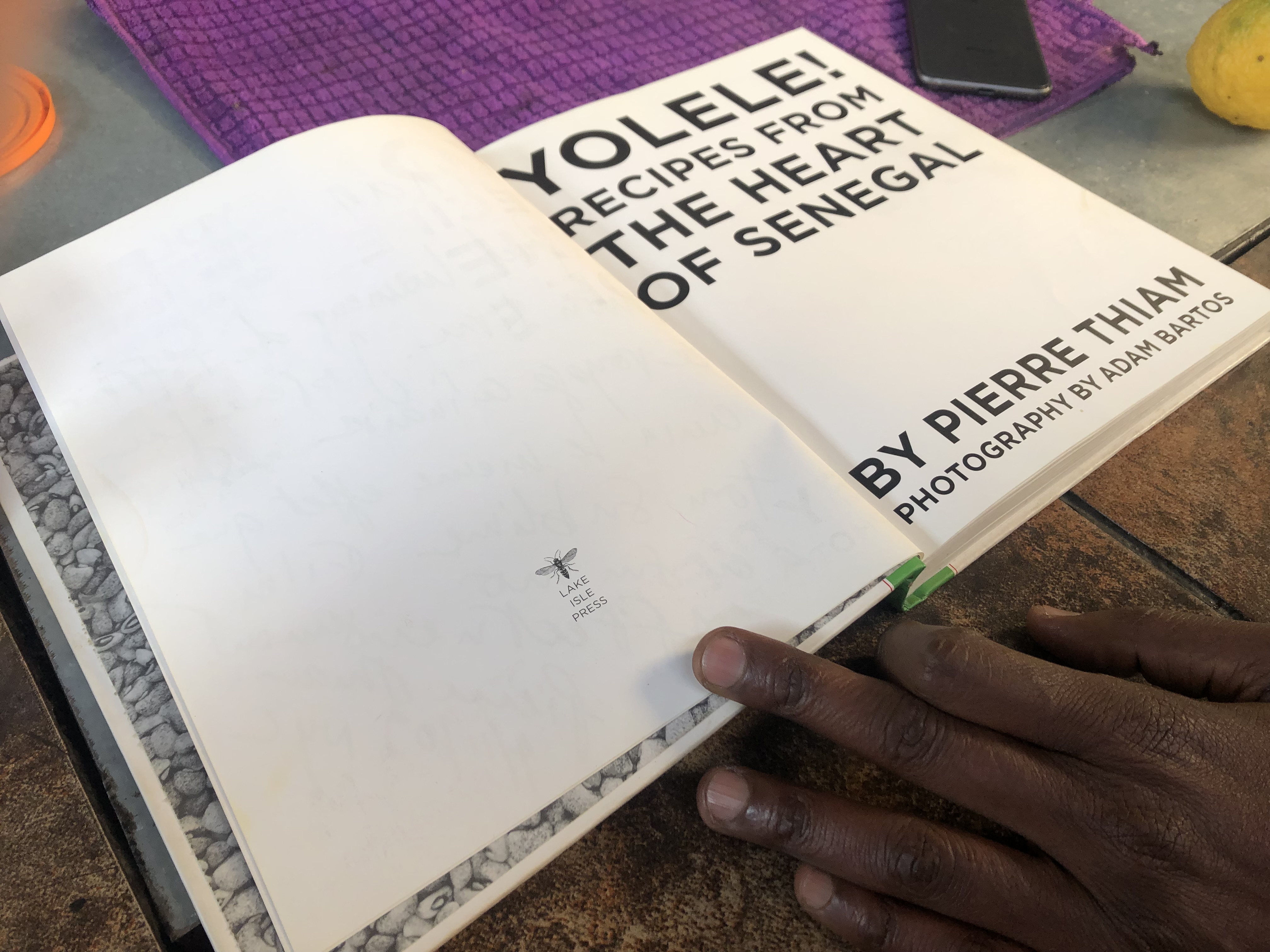
Yolele! means Yay! The book has our dish in it. (Photo: Marie-Lais Emond)
As Londiwe and I pretty much lick our communal plate clean, Sanza dashes off to get a book from his dinner club offices. There’s a big library of food books over there. Balla’s eyes enlarge with surprise when he sees the cookery book called Yolele! Recipes from the heart of Senegal by Pierre Thiam.
“It is also a song by Baba Maal! You know?” Next, Balla looks and finds thiebou jenn as Thiam has it. Immediately he’s quiet, quietly delighted. Yolele! Means Yay!
Chef Thiam owns restaurants in New York and grew up in Dakar eating all the comforting family foods, his favourite being the dish we’ve just been sharing.
Sanza leaves the book with Balla though it’s in English. “We don’t get that many Senegalese people around here these days.” Especially, under these circumstances.
Building fires, even if not as big as people think this one was, seem so all-engulfing, so finally destructive as things that matter curl and crisp and change from something into nothing before your eyes. So it’s wonderful to think that a new person in the ‘hood, with new hope for something like the lives of his family, was determinedly starting up his flaming burners to begin feeding us here as his best way of feeding his family far away. DM/TGIFood
Balla Soumah-Bakel, within the La Camerounaise courtyard, 27 Rockey St, Yeoville. 078 364 4779
Yeoville Dinner Club, Facebook yeovilledinnerclub
The writer supports Nosh Food Rescue, an NGO that helps Jozi feeding schemes with food ‘rescued’ from the food chain. Please support them here.



 Become an Insider
Become an Insider
Comments - Please login in order to comment.